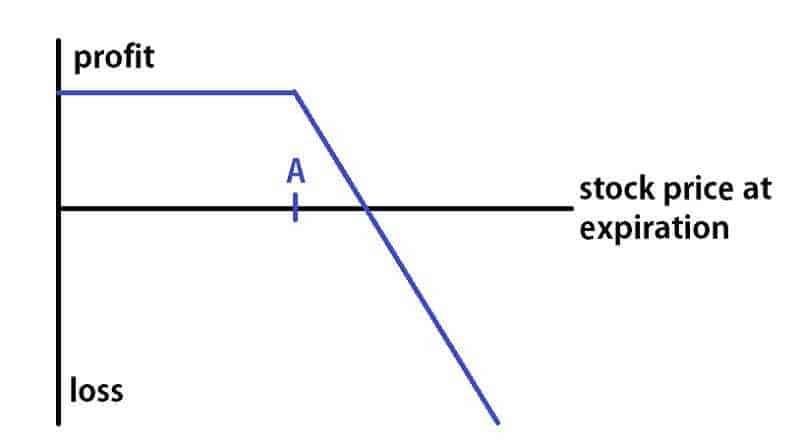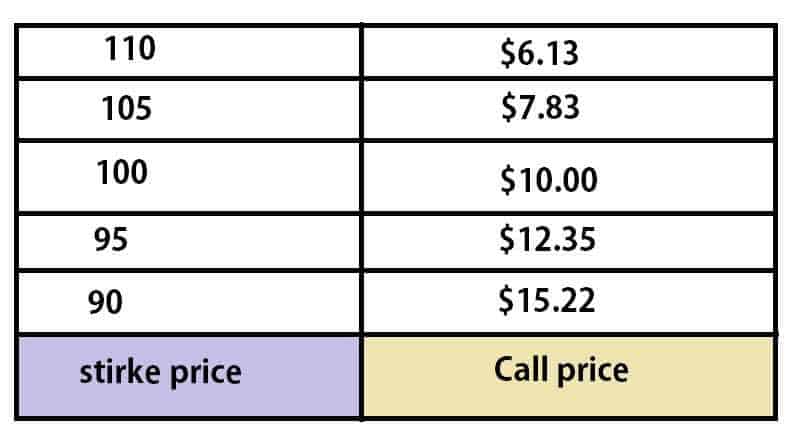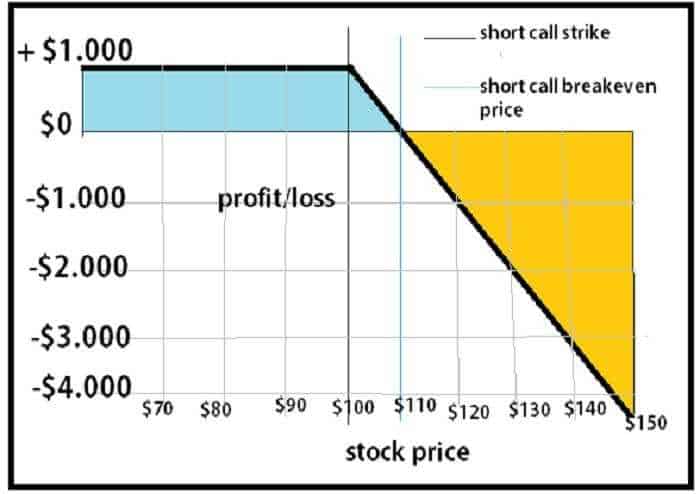3 min read

What is the short call option? The simplest way to classify “short” trade is any trade short of that from which you will profit if it falls in relative value.
A short call option is one of the trading strategies in which the trader is speculating the price of the asset on which option is placed is going to drop.
In short, a call option is the right to buy the underlying futures contract at a certain price.
That means, also, that the writer does not own an equivalent position in the underlying security represented by their options contracts.
Would you like to make a healthy return from a stock that drops in value in a short frame time?
If your answer is YES, you should think about the short call strategy.
Short Call Option in Practice
When you short a call you’re selling it up-front. That means that you get a credit to your account right away. But also, you will earn a positive return when the call option price drops.
Shorting, or selling, a call has many benefits, but the risks too.
In addition to the benefit of decreasing time, a short call option position is flexible.
This characteristic allows you to set the call’s strike price and your trade’s breakeven points above resistance levels you can see in your technical analysis.
This will boost the chances of a prosperous trade outcome.
Selling a call is a bearish trade.
Why? Because you are selling the call first, for a high price. And you hope to buy it back later for a lower price when the underlying stock declines. Sometimes, it means you let it expire worthlessly.
You should note that most traders believe that selling calls is a bigger risk strategy than selling puts. Most stocks and market indexes have a long term tendency to trend up.
That tendency to trend up cause most bearish trades less likely to end profitably. This grows the importance of evaluating
trends and finding the weakest stocks to trade.
Let’s see this graph.
 Call option
Call option
Selling the call obligates you to sell stock at strike price A (take a look at letter A) if the option is assigned.
When driving this strategy, you want the call you sell to expire worthlessly. That’s why most investors sell out-of-the-money options.
This strategy has a low-profit potential if the stock remains below strike A at expiration. Hence, the unlimited potential risk if the stock goes up.
The reason some traders operate this strategy is that there is a high possibility for success when selling very out-of-the-money options.
If the market moves against you, then you must have a stop-loss plan in place.
You have to keep an eye on this strategy as it is open out.
And, you have to consider ensuring that strike A is around one standard deviation out-of-the-money at the beginning. That will boost your chance of success.
Yet, the higher the strike price, the lower the premium collected from this strategy.
Some investors run short call option strategy using index options rather than options on individual stocks.
Historically, indexes have not been as volatile as individual stocks. Variations in an index component stock prices tend to cancel one another out. Hence, lessening the volatility of the index as a whole is on the scene.
There are two ways that a call option price will decrease in value:
- The price of the underlying stock drops
- Or the price of the underlying stock stays approximately the same as you get closer to contract expiration
Short Call Option – Strategy Characteristics
As we already say, the sale of a call option is a bearish options strategy that consists of selling a call option on a stock that a trader believes will decrease in price.
Let’s go over the strategy’s general characteristics:
Profit Potential: Credit received x 100
Loss Potential: Unlimited
Expiration breakeven price: Call Strike Price + Credit Received
The probability of profit: Higher than 50%
The position after expiration: If the trader holds an in-the-money short call through expiration, the trader will take an assignment of -100 shares per contract.
Are there some assignment risks?
When the short call is in-the-money before expiration, the trader is at risk of being assigned -100 shares of stock per call contract.
The risk of a short stock assignment is highest when the in-the-money call has small extrinsic value. Especially when the underlying stock is close to being paid out a dividend that exceeds the extrinsic value of the call.
Expiration profits and losses for a short call option position
Take a look at a short call position from the following option chain:

Call option chain
You will, for example, sell the 100 call for $10. Let’s, therefore, assume that the stock price is trading for $100 when you sell the call option.
Initial Stock Price: $100
Call Strike Price: $100
Call Sale Price: $10
If you sell this call option, your potential profits and losses at expiration are illustrated by the following graph:

Selling a call option
So, this table describes different scenarios of this short call position at expiration:
Stock Price Below the Short Call Strike (Below $100):
The call expires worthless, and the maximum profit potential is $1,000.
Stock price between $100 and $110: The call expires with intrinsic value, but not more than the initial $10 sale price of the call.
The result is partial profits at expiration.
If the call is held through expiration, the trader will be assigned -100 shares of stock per call contract.
The stock price at the breakeven price is at $110:
The call expires with $10 of intrinsic value. Because the call was initially sold for $10, the short call trader breaks even.
If the call is held through expiration, the trader will be assigned -100 shares of stock per call contract.
Stock price above $110:
The call expires with more than $10 of intrinsic value, and therefore the short call trader gains losses.
The exact loss is equal to: (Short Call Breakeven Price – Stock Price) x 100.
If the trader holds the call through expiration, they will be assigned -100 shares of stock per call contract.
Advantages and Risks of Short Call Options
Advantages
Immediate return – You get your maximum profit right away. Of course, you could lose that profit if the underlying stock price drops, so don’t get too excited.
Significant returns in the short term – Options operate with leverage. That means you can see significant returns over just a few months.
Risks
Unlimited loss – There’s nothing to prevent a stock price from skyrocketing once you’ve sold the call option. In that case, you’ll take a huge loss.
Margin wipe-out – If the trade goes south, you could end up spending a lot of cash out of your account to cover the short call. With less cash in your account, your margin funds will decrease accordingly.
Don’t waste your money.
Don’t start before you test your skills on virtual money and read this risk disclosure



Leave a Reply